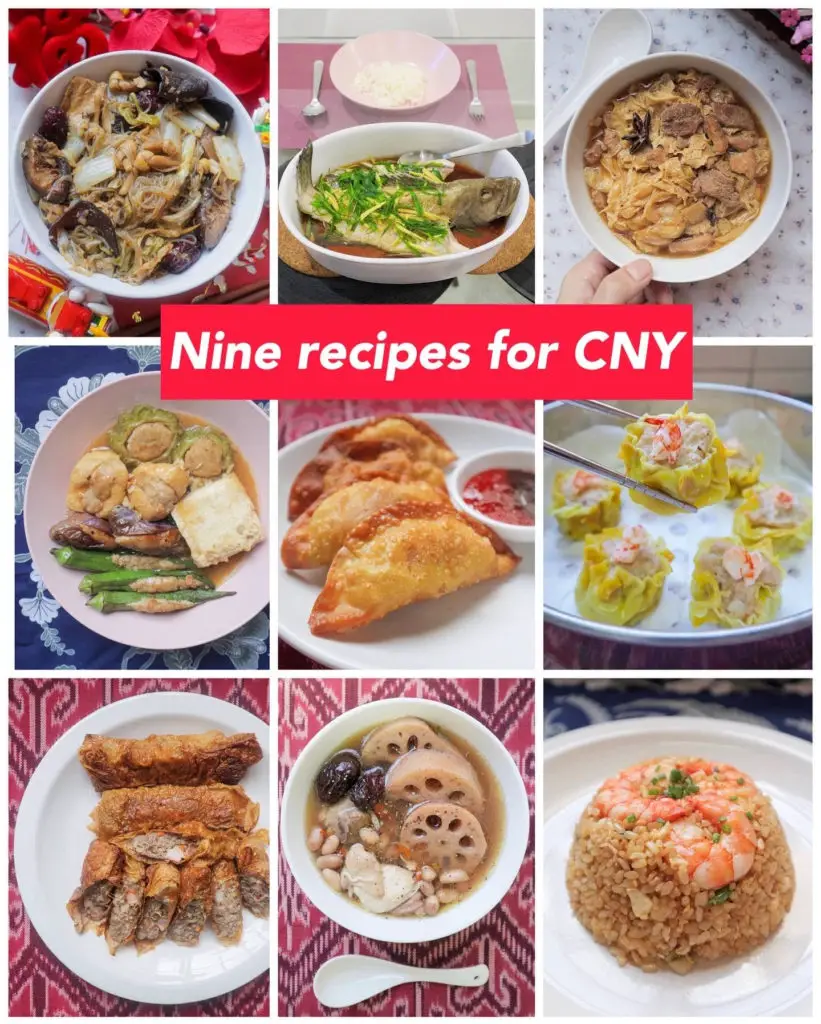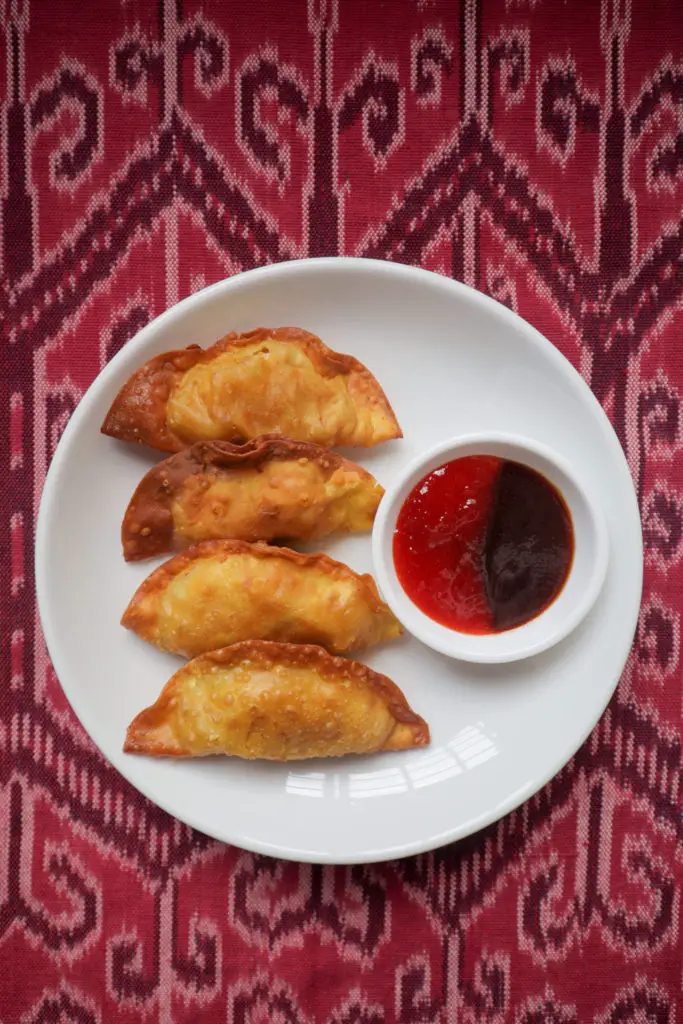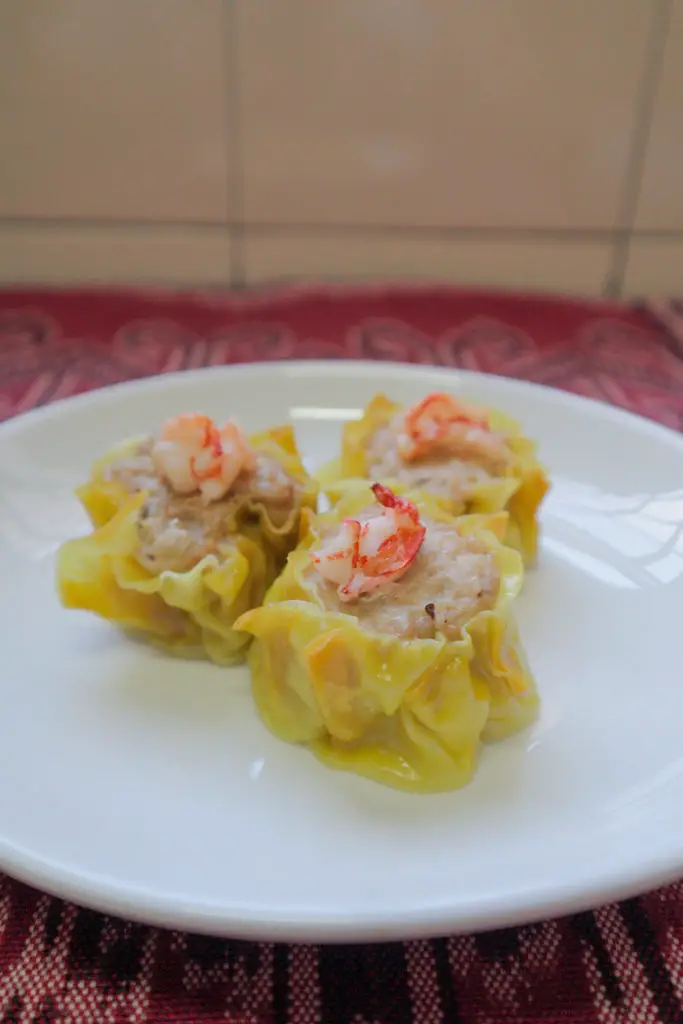Looking for Chinese New Year recipes?
Here are some easy recipes of our favourite dishes for Chinese New Year, or Lunar New Year.
The anticipation of Chinese New Year begins with the Winter Solstice (冬至), which is just a month away from the Lunar New Year.
During the Winter Solstice, most Chinese families spend time making Tang Yuan – glutinous rice balls – served in sweet soup. The balls symbolise reunion, as it was tradition for family members to make the sweet dessert together.
For the next month until Chinese New Year, most families will be kept busy cleaning their homes, shopping, baking, and cooking for Reunion Dinner.
Best Chinese New Year Recipes
Chinese New Year is an important and auspicious occasion celebrated by the Chinese communities all over the world. Also known as Spring Festival or the Lunar New Year, it signifies the beginning of a new year on the traditional lunisolar Chinese calendar.
The festivities begin on New Year Eve, when families gather together during Reunion Dinner to eat and fellowship. This is usually considered the most important meal of the year as most family members who have not seen each other finally meet up face-to-face.
Chinese New Year lasts for fifteen days and ends with the celebration of Chap Goh Mei (literally, fifteenth night in Hokkien) or Lantern Festival.
Chinese New Year recipes in Malaysia
The Chinese New Year is associated with many customs and myths – and this extends to the dishes served during Reunion Dinner as well.
The dishes served during Reunion Dinner are usually varied and bountiful.
While different Chinese diaspora and dialects have various interpretations of CNY dishes – they usually feature fish, dumplings, vegetables, chicken, and pork.
Here are the recipes of our nine favourite Chinese New Year dishes and what they symbolise.
Nine Chinese New Year recipes
1. Chap chye (杂菜)
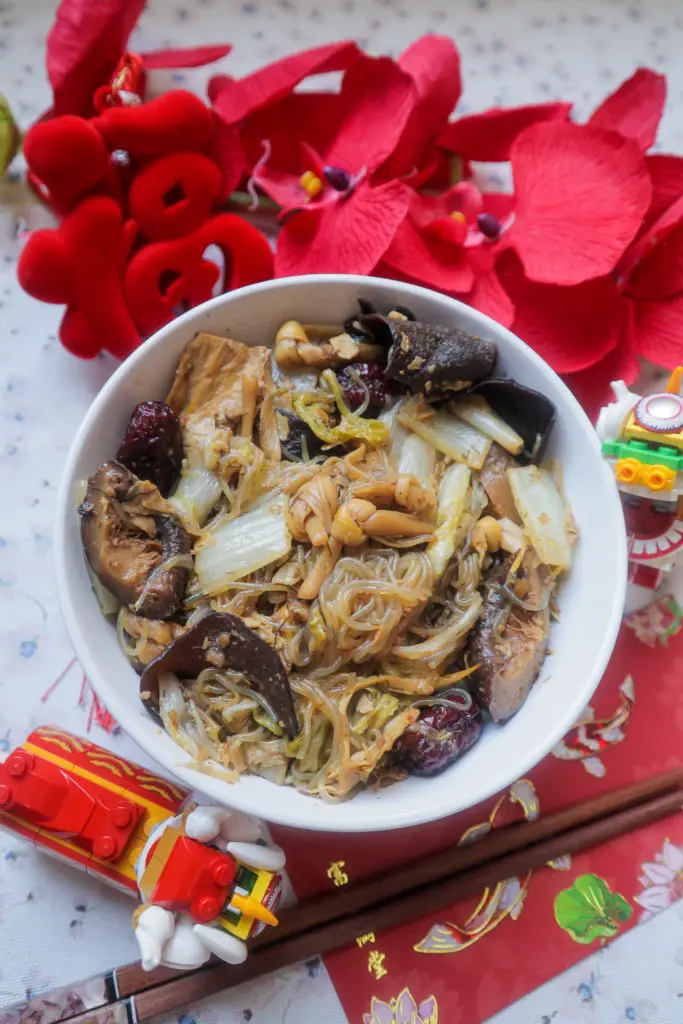
Chap chye
Chap chye is a braised mixed vegetable dish commonly served during CNY. The Cantonese tend to use fermented red beancurd (nam yu 南乳) as an aromatic for this dish, while the Nyonya or Hokkiens prefer fermented yellow beancurd (taucu 豆醬).
Key ingredients such as lily buds symbolise success due to their golden hue, while black moss literally means prosperity or fatt choy in Cantonese. The mix of vegetables also represents a bountiful harvest.
This dish is best cooked in advance before Reunion Dinner to allow the vegetables to soak in the gravy and flavours. Check out our chap chye recipe here.
2. Steamed fish

Kung chew steamed fish
Steamed fish is essential during CNY as it represents prosperity – the Chinese character for fish (鱼, yu) had the same pronunciation for surplus (余, yu). Hence, the Chinese believe that consuming fish would result in a surplus of wealth for the year.
This is derived from the saying 年年有余 (may you have surplus every year, or nian nian you yu).

Cantonese steamed fish 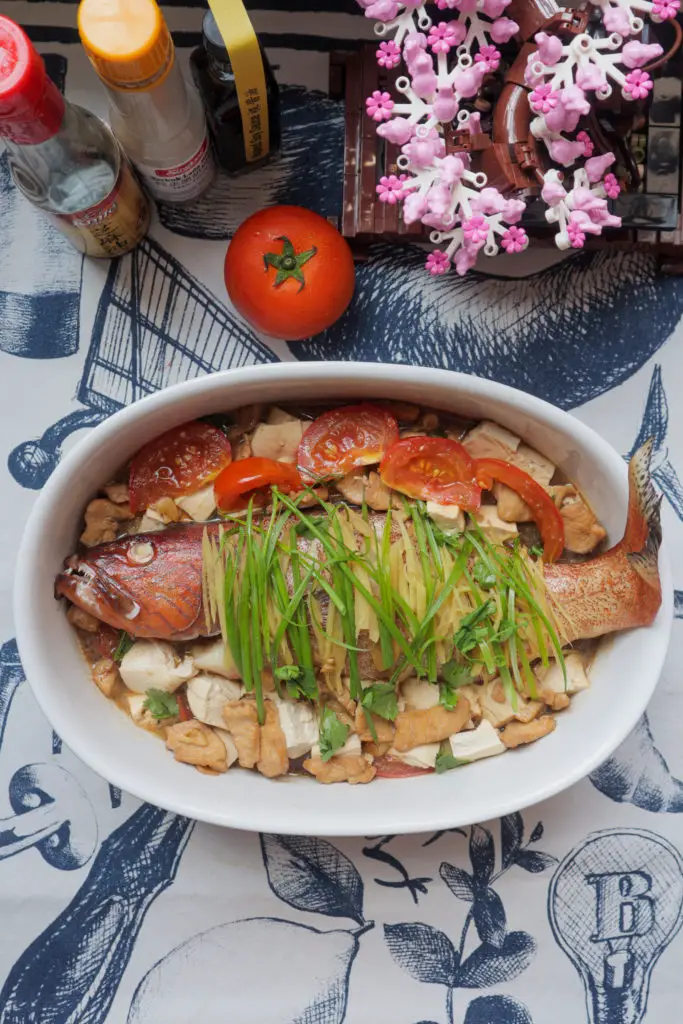
Whole fish must be served
It is also important that the steamed fish is served whole (with the head and tail intact) to represent a smooth journey “from head to tail”.
Our Cantonese-steamed fish recipe is most popularly served during CNY as it is easy-to-cook with a few ingredients, and is extremely delicious. Find the recipe here.
For something with more protein, check our our Kung Chew Steamed Fish recipe here.
3. Braised pork with fu chuk
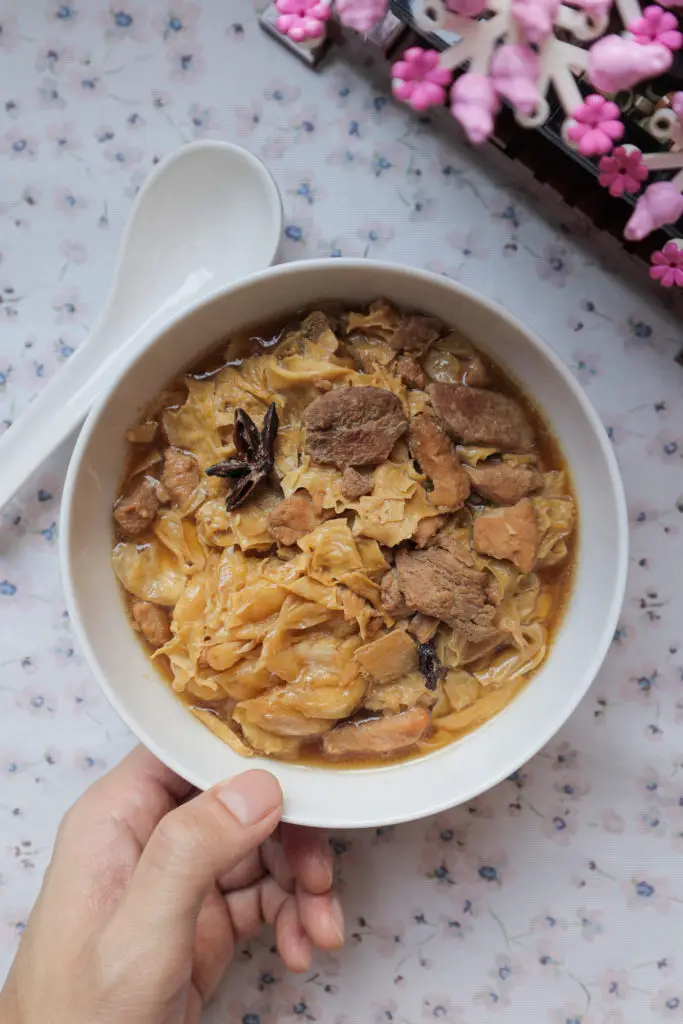
Braised pork with fuchuk
Pork is a common dish served during CNY as it represents strength and abundant blessings. Meanwhile, beancurd (fu chuk) is said to represent fulfillment of happiness and wealth.
This dish combines both auspicious ingredients! More importantly, it is extremely easy to cook with the pressure cooker.
See our Braised Pork with Fuchuk recipe here. Also check out the similar Tau Yew Bak recipe here.
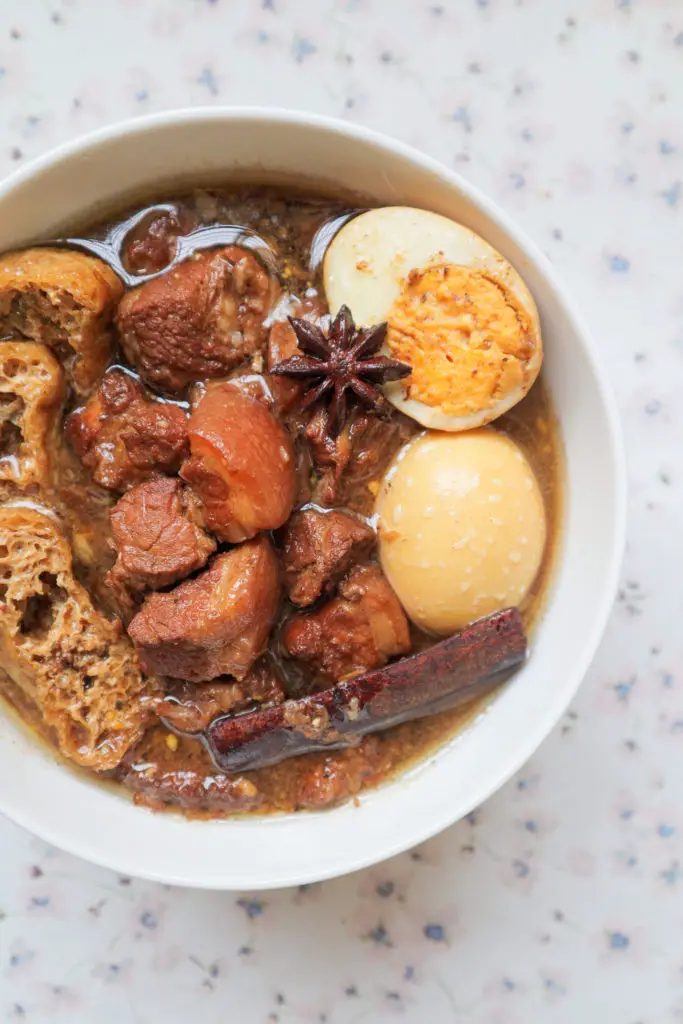
Tau Yew Bak 
4. Mom’s Hakka Yong Tau Foo

Mom’s Hakka Yong Tau Foo
Our mom’s Hakka Yong Tau Foo is one of our absolute favourites ever! In other parts of the world, this dish is also called Three Treasures (煎釀三寶) – with the three treasures being bitter gourd, brinjal and chilli.
For our mom’s recipe, the meat paste is stuffed with pork and fresh Spanish mackerel. Find our recipe here.
5. Fried dumplings
Dumplings (饺子 jiǎozi) are traditionally eaten during CNY as they are shaped to look like Chinese silver ingots. Thus, eating more dumplings during the celebrations will lead to more wealth (and an expanded waistline).
We recommend our Fried Dumplings recipe (sui kow in Cantonese). These morsels contain fish, pork, carrots and scallion! Find our recipe here.

Gyoza For Life’s dumplings 
Also, check out Gyoza for Life’s Japanese dumplings here.
6. Siew mai
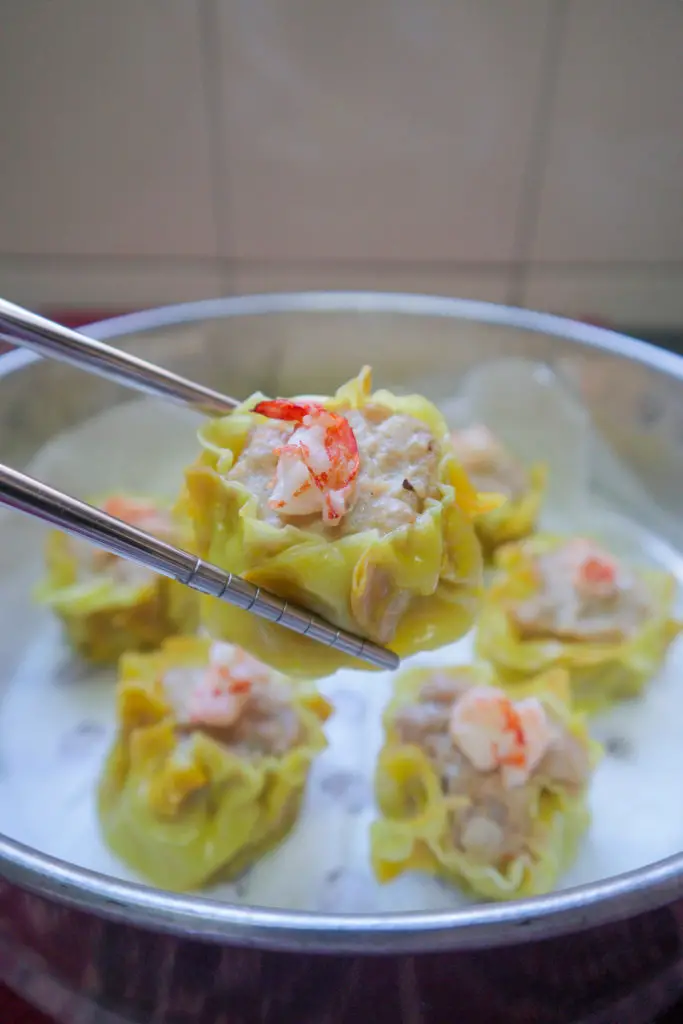
Siew Mai
Everyone love Siew Mai! Why not have it for CNY as well? In a way, our siew mai recipe is an extension of our fried dumplings recipe as it uses a similar paste without the scallion. Find our recipe here.
7. Lobak

Lobak
Spring rolls are commonly consumed during CNY as they look similar to golden bars in colour and shape. Hence, they symbolise wealth (see a pattern here?). We propose our Lobak recipe – a five-spice meat roll from the Nyonya cuisine. Recipe here.
8. Lotus Root and Peanut Soup
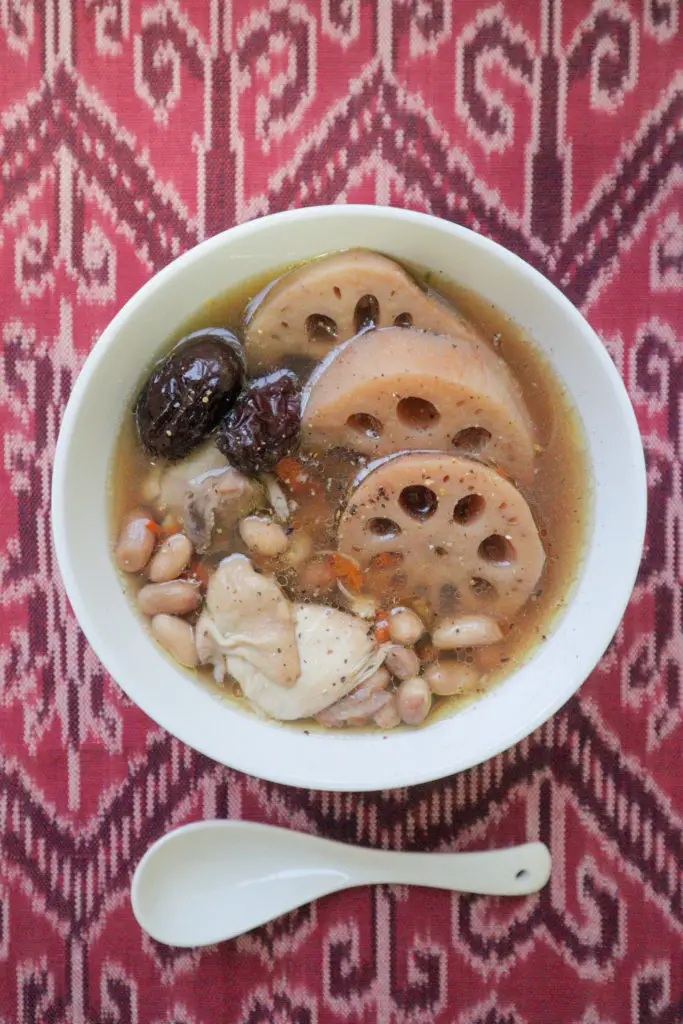
Lotus Root Soup
No Cantonese CNY dinners would be complete without a pot of warm Chinese soup. Lotus root soup is popular as it signifies abundance and prosperity. Our soup is especially easy to cook with the pressure cooker. Find recipe here.
9. Golden DTF shrimp fried rice
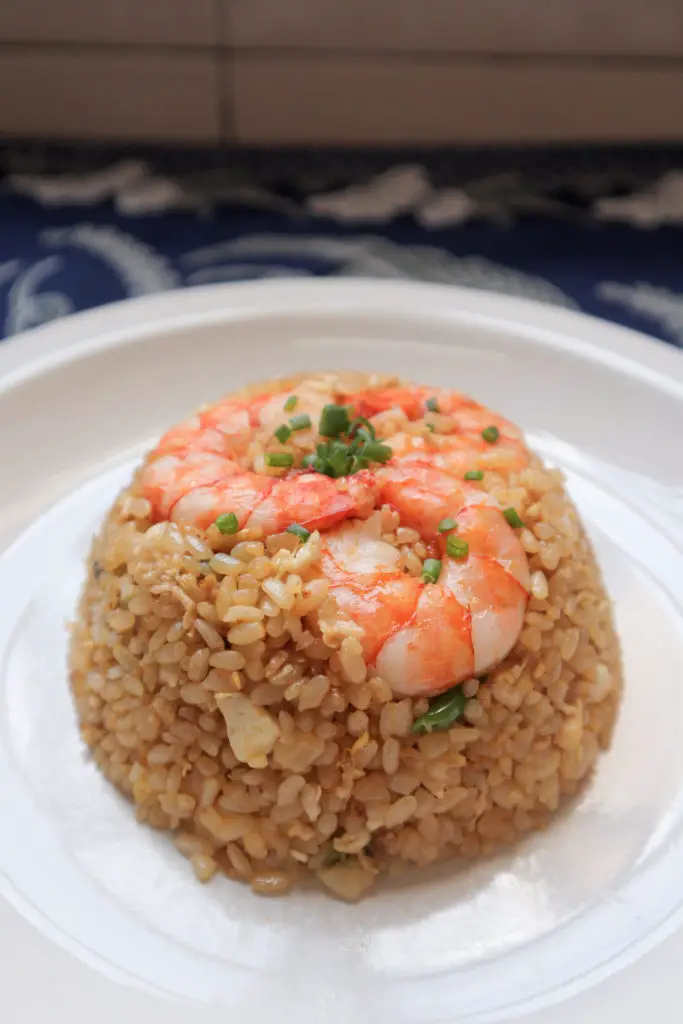


Golden DTF Shrimp Fried Rice
Finally, how can we not recommend our Golden DTF shrimp fried rice?
It’s golden (more wealth!) and delicious – with rice symbolising fertility and good fortune. Make sure to serve it with extra large prawns (大虾) as they denote liveliness. Check out our recipe here.
So what is your must-eat dish for Chinese New Year?
Follow us on Instagram
Follow us on Instagram for the latest recipes and food adventures.

